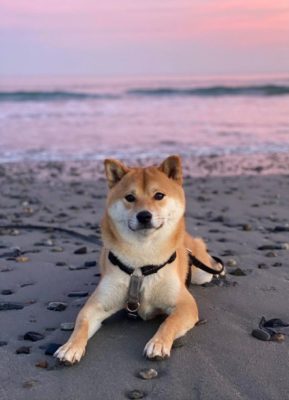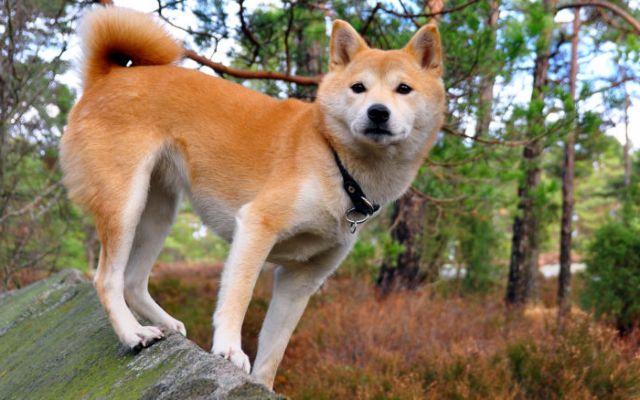Shiba Inu

The Shiba Inu is a pet for experienced dog owners. The four-legged dog shows willfulness and dominance. Attempts to show who’s the boss in the house are not excluded. The Shiba Inu is active but can easily get along in a metropolis. The main thing is to provide long walks with intellectual and physical activity.
Table of Contents
Breed Information
| Another Name | Japanese Shiba Inu, Japanese Small Size Dog, Japanese Brushwood Dog, Shiba Ken, Shobe, Shibe, Shober |
| Origin | Japan |
| Height | Males 40-42 cm Females 37-39 cm |
| Weight | 7-13 kg |
| Fur | Two-tiered, medium length |
| Color | Red, black, black with light tinges |
| Lifespan | 12-15 years |
| FCI Classification | Spitz and primitive types |
| Group | Hunting dogs, apartment dogs |
| Price | $600-1300 |
Breed Photos
Origin History
The Shiba Inu first appeared on the Japanese islands by crossing local breeds with dogs imported from China and Korea. Due to the Japanese state’s closed nature, until the middle of the 19th century, the Shiba Inu was bred only on this territory. After the appearance of the dog in Europe, cross-breeding with pointers and setters came into practice.
Active indiscriminate selection practically led to the loss of the breed. Many measures were taken in 1928 to restore the number and preserve the purity of the breed. Only eight years later, it was possible to define standards for the main selection criteria. Some years later, the breed has been declared the national treasure of Japan. By the end of the twentieth century, the Shiba Ken became particularly popular abroad, and in 1992 it was recognized by the American associations AKC and UKC.
Appearance
The Shiba Inu is a dog with a strong backbone and well-proportioned body. This breed’s paws are medium-sized, and the pointed muzzle with a black nose tip resembles a fox’s. The dog has a broad chest and straight back. Due to its athletic body constitution, the Shiba Inu shows stamina when hunting.
The wool of the breed representatives has two levels. The undercoat is thick and soft, and the main layer of hair is tough. Color can be bright red, black, or sesame red, black with light-colored undercoats. Cream, white or light-colored breeds are considered unsuitable for show.
Character
The Shiba Inu is a pet for experienced dog owners. The four-legged dog shows willfulness and dominance. Attempts to show who’s the boss in the house are not excluded. The Shiba Inu is active but can easily get along in a metropolis. The main thing is to provide long walks with intellectual and physical activity.
The Shiba Inu quickly becomes attached to the owner and his family members. It does not get along well with small children. Walk your pet on a leash only. It is necessary because the Shiba Inu’s hunting instincts are stronger than the skills acquired during training.
Care
The hair of this breed should be brushed regularly. If the dog sleeps in the same bed as its owner, it should be bathed 1-2 times a week. For the well-being of your dog, take him for at least 2 hours of walks every day. Your dog needs to let his energy out. Otherwise, he will be naughty at home.
Inspect your dog’s eyes and ears. They must be cleaned regularly. Otherwise, there is a risk of developing infectious diseases. Trim your dog’s claws and check the condition of his teeth.
Training
The Shiba Inu is a stubborn dog. It is necessary to find a unique approach to its training. Representatives of the breed quickly learn new knowledge, but they are completely subjugated to their instincts in a stressful situation. It is necessary to bring commands to automatism.
Early socialization is an important stage of Shiba Ken’s training. The earlier the puppy makes friends with other animals, the less chance of conflicts in the future. Representatives of this breed are proud creatures. Do not raise your hand or raise your voice to your pet.
Common Diseases
The Shiba Inu is a dog with good health. Representatives of the breed are considered long-livers. Common diseases:
- hip dysplasia;
- dislocation of the kneecap;
- osteochondritis;
- shortened spine.
The Shiba Inu is characterized by good health and immunity. To avoid the diseases above, keep an eye on your pet’s musculoskeletal system and consult your veterinarian if necessary.
Nutrition
Nutrition plays a vital role in shaping and maintaining your four-legged dog’s body. Give your sibling meat, vegetables, and fruits. Do not forget about cereals, fish products, and greens. Dairy and fermented milk can help avoid bone problems. Get a vitamin complex if you’re not sure your dog is getting enough micronutrients. If you don’t have time to prepare natural food, buy ready-to-eat formulas.
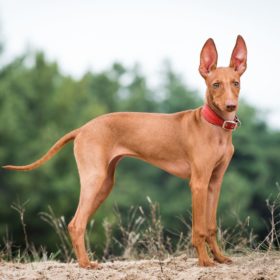 Cirneco dell’Etna
Cirneco dell’Etna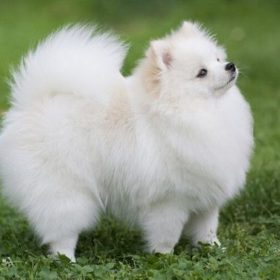 Pomeranian
Pomeranian Hokkaido
Hokkaido Canaan Dog
Canaan Dog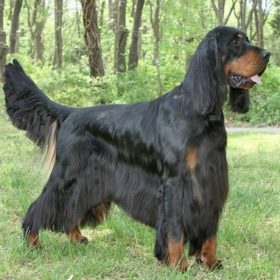 Gordon Setter
Gordon Setter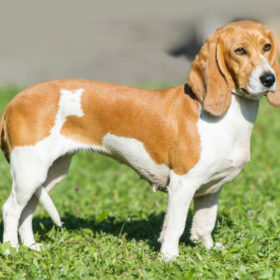 Small Schwyz Hound
Small Schwyz Hound